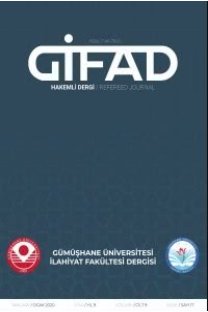Nedensiz Şiddet Bağlamında “FUNNY GAMES” Filmi Üzerine Bir İnceleme
ÖZETSinema sanatını ‘gerçeklik’ ve gerçekliğin yeniden üretimi olarak yorumlayan ve bunu eleştirel bir düzlemde izleyiciye sunan Avusturyalı yönetmen Michael Haneke, Funny Games filminde, şiddetin nedensiz doğasını, sinemanın kendi diliyle betimlemektedir. Haneke’ye göre, şiddete bir gerekçe sunulmaması ve şiddetin aleni bir şekilde ekranda sergilenmemesi, izleyicinin gerçekliğini tersyüz etmektedir. Gerçek dünya algılamasına göre, şiddetin altında yatan değişik nedenlerin bilinmesi, şiddetin bir şekilde nedenselleştirilmesini ve doğallaştırılmasını sağlayarak bireyleri rahatlatmaktadır. Çalışmada, Haneke’nin 2007 yılında beyazperdeye yansıttığı, Türkçe’ ye Ölümcül Oyunlar olarak çevrilen Funny Games filmi, orta sınıftan oluşan bireyler arasında yaşanan şiddetin nedensiz doğası ve izleyicide bırakılması hedeflenen etkileri bağlamında, sinemasal anlatım özellikleri ve yapısı açısından çözümlenmiştir. Çalışma bağlamında, şiddetin dilinin deforme edilmesiyle birlikte oluşturulmaya çalışılan ‘rahatsız olma hali’, filmde yer alan konuşmalar, mekânda kurgulanan göstergeler ve kameranın açısı tümden yorumlanarak eleştirel metin çözümlemesi yöntemiyle analiz edilmiştir.Anahtar kelimeler: Nedensiz şiddet, Funny Games, Michael Haneke, modernizm, postmodernizm.A STUDY ON “FUNNY GAMES” FILM IN THE CONTEXT OF GRATUİTOUS VİOLENCE ABSTRACTAustrian director Michael Haneke who interprets the cinema art as ‘reality’ or the reproduction of the reality and presents it to the audience in a critical perspective, has characterised the gratuitous nature of violence through a cinematic expression in his film Funny Games. According to Haneke, not to given a reason for violence and not to explicitly displayed the violence on the screen. According to the real-world perception, being known the causes of violence relieve the audience by making reasonable and naturalizing the violence. In the study, Funny Games film which translated into Turkish as “Ölümcül Oyunlar” and turned into a screenplay by Haneke in 2007 were analyzed in terms of the cinematic narration features and its structure, in the context of the gratuitous nature of violence consisted among the bourgeoisies and the effects on the audience. In the context of the study, “the state of being uncomfortable” arised from the language of violence was deformed, the speeches taken place in the film, the indicators figured in the space and the aspect of the camera was throughout analyzed by the critical textual analysis.Keywords: Gratutitous violence, Funny Games, Michael Haneke, modernism, postmodernism.
-
Austrian director Michael Haneke who interprets the cinema art as ‘reality’ or the reproduction of the reality and presents it to the audience in a critical perspective, has characterised the gratuitous nature of violence through a cinematic expression in his film Funny Games. According to Haneke, not given a reason for violence and not to explicitly displayed the violence on the screen reverses the realities and routines of the audience about the violence. According to the real-world perception, being known the causes of violence relieve the audience by making reasonable and naturalizing the violence. In the study, Funny Games film which translated into Turkish as “Ölümcül Oyunlar” and turned into a screenplay by Haneke in 2007 is analysed in terms of the cinematic narration features and its structure, in the context of the gratuitous nature of violence consisted among the bourgeoisies and the targeted effects to strike on the audience. In the context of the study, “the state of being uncomfortable” arising from the language of violence by deformation, the speeches taking place in the film, the indicators figured in the space and the aspect of the camera are analysed throughout by the critical textual analysis
___
- AKAY, Ali (2006). Sunuş, Der., Firdevs Gümüşoğlu, Terör, Şiddet ve Toplum, İstanbul: Bağlam Yayınları, 7-14.
- ARNOLD, Frank (1986). Film, Münih/ Viyana.
- ATASOY, D. Ayşe (2013). “Sinema Ve Televizyonda Görsel Haz Ve Sinemasal Çözümlemeler”, The Turkish Online Journal of Design, Art and Communication – TOJDAC, 3, (3).
- BABAL, Gökhan; TIĞLI, Özlem (t.y). Avrupa Sinemasında Yabancılaşma ve Gerçeklik Ya da Rahatsız Etmenin İki Farklı Yolu, (Erişim Tarihi: 30.12.20104), http://m.friendfeed-media.com/0120f6359861f8921e0 01932bfd4df5ce1862ba9.
- BARTHES, Roland (1988), Anlatıların Yapısal Çözümlemesine Giriş, (Çev: Mehmet- Sema Rifat), İstanbul: Gerçek Yayınevi.
- BAUDRİLLARD, Jean. (2004). Tüketim Toplumu, (Çev: H. Deliceçaylı ve F. Keskin), İstanbul: Ayrıntı Yayınları.
- BÜKER, Seçil (2009). Sinemada Anlam Yaratma, İstanbul: Hayalbaz Kitabevi.
- CÜNDİOĞLU, Cücane (2012). Sinema ve Felsefe, İstanbul: Kapı Yayınları.
- http://www.derindusunce.org/2009/07/08/hanekenin-olumcul-oyunlari-sanatin-sonu- mu/, (Erişim Tarihi: 02.01.2015).
- İSPİR, Naci; KAYA, Zekeriya (2011). Sinemada Postmodern Arayışlar, Atatürk
